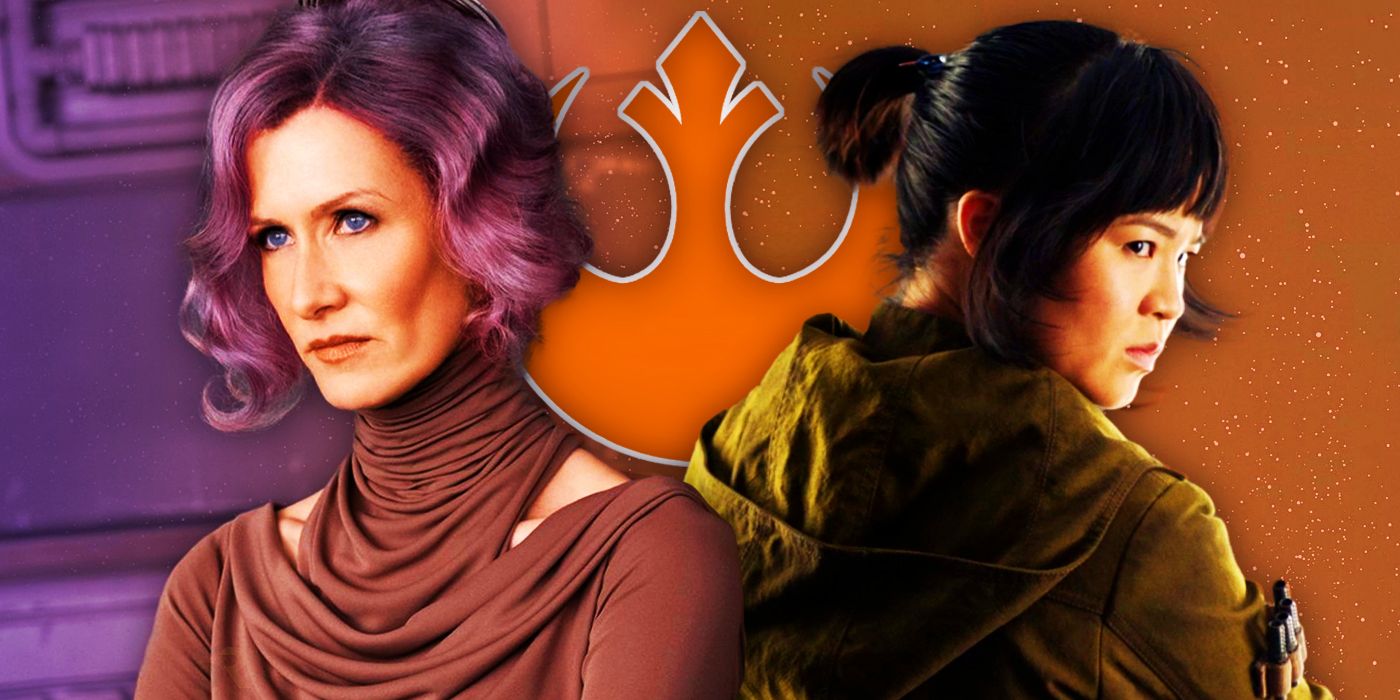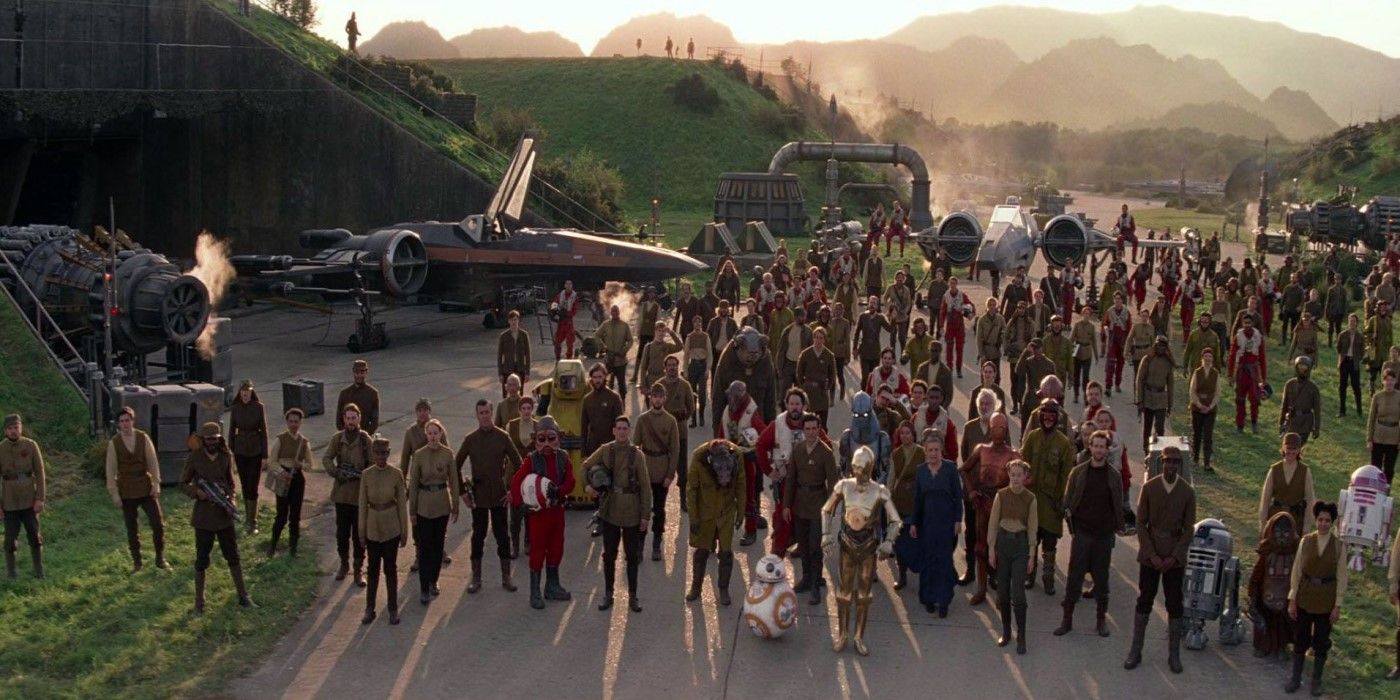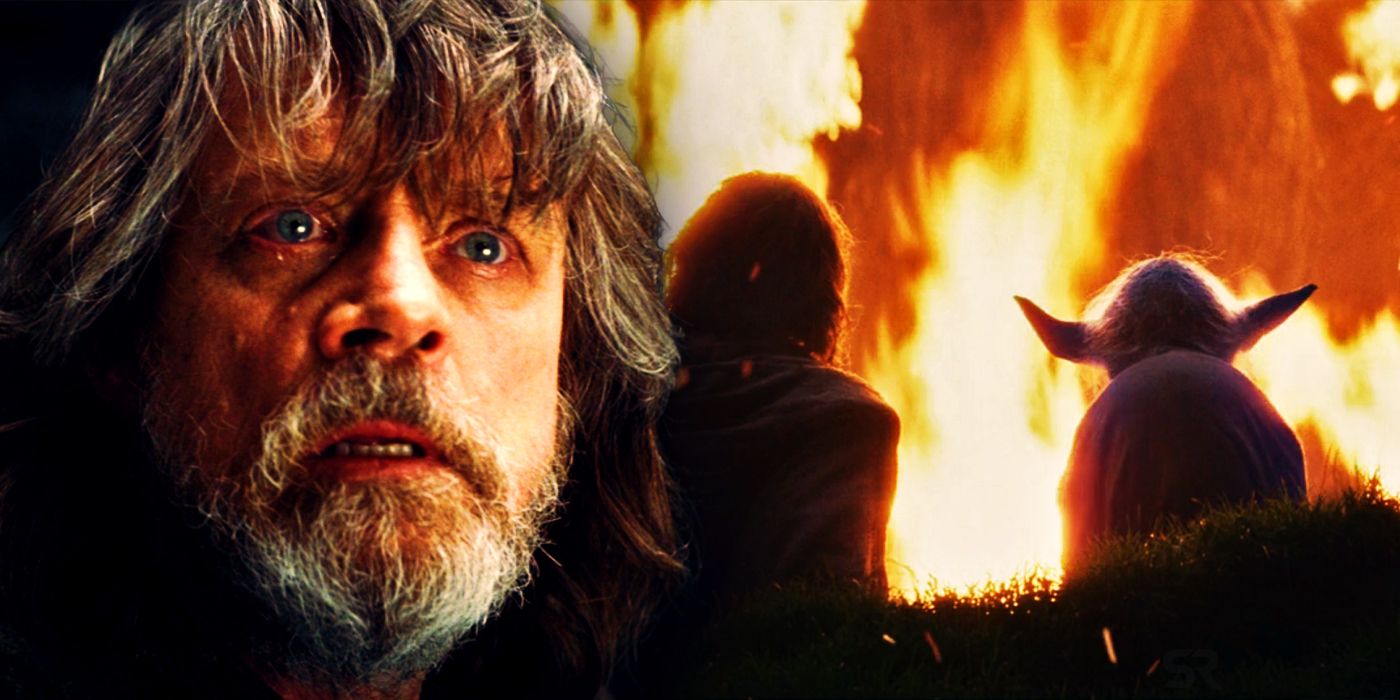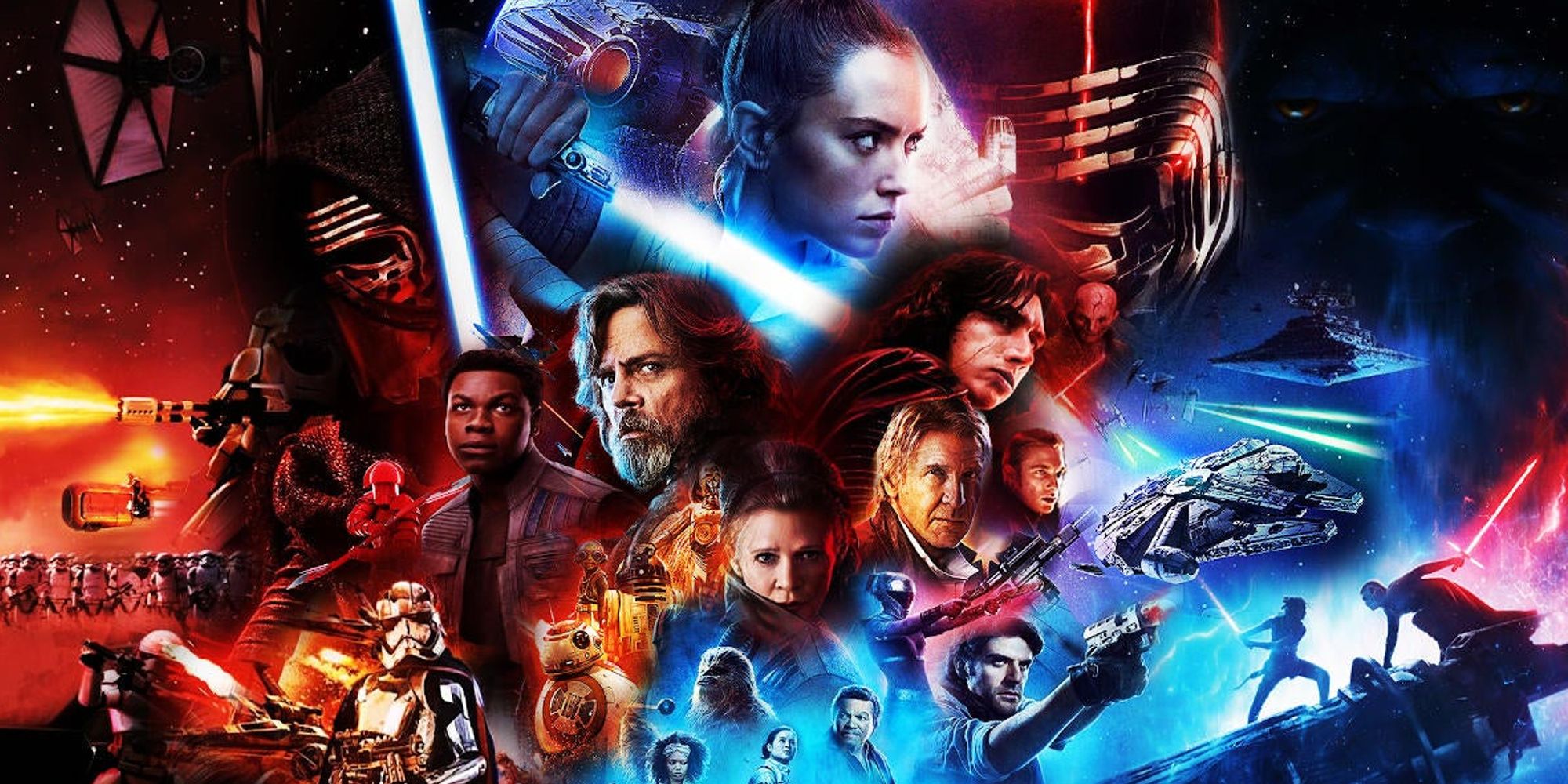Star Wars: The Last Jedi often conflates the Resistance with the original Star Wars trilogy’s Rebellion, and while this is a relatively minor issue, it speaks to the film’s broader faults and those of the sequel trilogy writ large. The Star Wars sequel trilogy films are notoriously divisive, even by the franchise’s usual standards, with The Last Jedi causing the most controversy of the three. While some argue the film’s merits, it is clear, in ways small and large, that the film simply does not understand its predecessors or the universe it inhabits, hence its plethora of problematic decisions.
As the Star Wars sequel trilogy’s most criticized installment, it is easy to miss some of The Last Jedi’s smaller mistakes. While confusing the Resistance with the Rebellion borders on a nitpick, it highlights two major flaws. The Last Jedi does not see a difference between the two factions (indicating that it does not understand its own premise) and for all its seemingly subversive choices, it ultimately replicates the previous Star Wars films far more than Star Wars: The Force Awakens. This speaks to the broader missteps of the Star Wars sequel trilogy, whose poor planning and excessive self-awareness did the franchise a disservice.
The Last Jedi Confused The Rebellion & Resistance (& That's Bad)
The Force Awakens is popularly criticized for falling back on the “Rebels vs Empire” conflict of the original Star Wars trilogy instead of establishing a new dynamic, and while this complaint is justified, the film’s new factions are not quite the same as their predecessors. In the original trilogy, the Empire controlled he galaxy and the Rebellion sought to topple it and restore democracy. In The Force Awakens, the New Republic is the dominant force in the galaxy, but they quietly use the Resistance to stop the spread of the First Order, a fascist military junta seeking to restore the old Empire.
Using their planet-destroying Starkiller Base, the First Order wipes out the New Republic capital world of Hosnian Prime, crippling their largely decentralized and demilitarized government, yet this still does not restore the original trilogy’s exact dynamic. The First Order did not control most of the galaxy between The Force Awakens and The Last Jedi (there is no time jump between the two films). With Starkiller Base gone and the New Republic decapitated, they simply continue their attempts to wrest control of the galaxy while the Resistance continues the fight to stop this spread. The Last Jedi had the potential to move the narrative into new territory, but it did not.
Throughout The Last Jedi, General Hux, Admiral Holdo, Snoke, and Kylo Ren all refer to the Resistance as the Rebels, but more tellingly, the film’s opening crawl does, too. The film itself is not interested or aware of any differences between its warring factions and their original trilogy counterparts, as evidenced by the way it uses the terms “Rebels” and “Resistance” interchangeably. The Last Jedi’s failure to understand these differences, combined with its shot-for-shot and line-for-line repeats of numerous original trilogy scenes, ultimately makes it a far more derivative film than The Force Awakens.
The Last Jedi's Resistance Mistake Speaks To Its Core Issues
The Last Jedi’s disinterest in understanding the franchise it inhabits goes beyond conflating the Rebels with the Resistance. The film’s criticisms of the Jedi were already made more competently in the previous trilogies, with Yoda’s generation embodying the Order’s flaws and Luke representing a bright and improved future for the Jedi. Rather than tread new ground for Luke’s character and the Star Wars franchise, The Last Jedi simply restates the Jedi Order’s flaws from previous films and squanders hope of a payoff to Luke’s characterization in Return of the Jedi, which saw him learning from the flaws of his predecessors and becoming the first of a new type of Jedi.
The Last Jedi forgets that the Sith were destroyed long before the birth of Ben Solo (before their survival is retroactively confirmed in Star Wars: The Rise of Skywalker), yet he lists them as one of several factions that he and Rey must let go of, as though Snoke (an unaffiliated dark side user) and Kylo Ren himself (a Knight of Ren) are simply Sith because they use the dark side. Snoke is used as a stand-in for Emperor Palpatine, wasting his potential as a new and distinct Star Wars villain so that The Last Jedi could replicate Return of the Jedi’s throne room sequence.
The Last Jedi’s mishandling of its characters and factions stems from two of its core issues. The film seeks to deconstruct the Star Wars franchise without understanding it, resulting in repeats of character and narrative developments that previous movies handled far better and an excessive amount of leaning of the fourth wall. The Last Jedi also attempts to throw as many curveballs at its viewers as possible, yet its basic structure and several entire scenes are simply poor facsimiles of the original Star Wars trilogy films. Repeatedly calling the Resistance the Rebels is hardly the movie’s worst offense, but it is indicative of its foundational flaws.
The Last Jedi's Resistance Mistake Highlights The Sequels' Bigger Problems
The Last Jedi may be the sequel most lacking in originality, but its predecessor and successor share some of the same core issues. The Force Awakens tried too hard to set up the Star Wars franchise’s future and played things as safely as possible. The Rise of Skywalker, similarly, tried to please both the critics and admirers of its predecessor with a film full of heavy-handed retcons and frantic moves to conclude storylines left unaddressed or mishandled. Star Wars: The Last Jedi’s inability to differentiate the Resistance from the Rebels demonstrates its bigger issues with excessive meta narratives and a disinterest in the lore of the Star Wars franchise.




